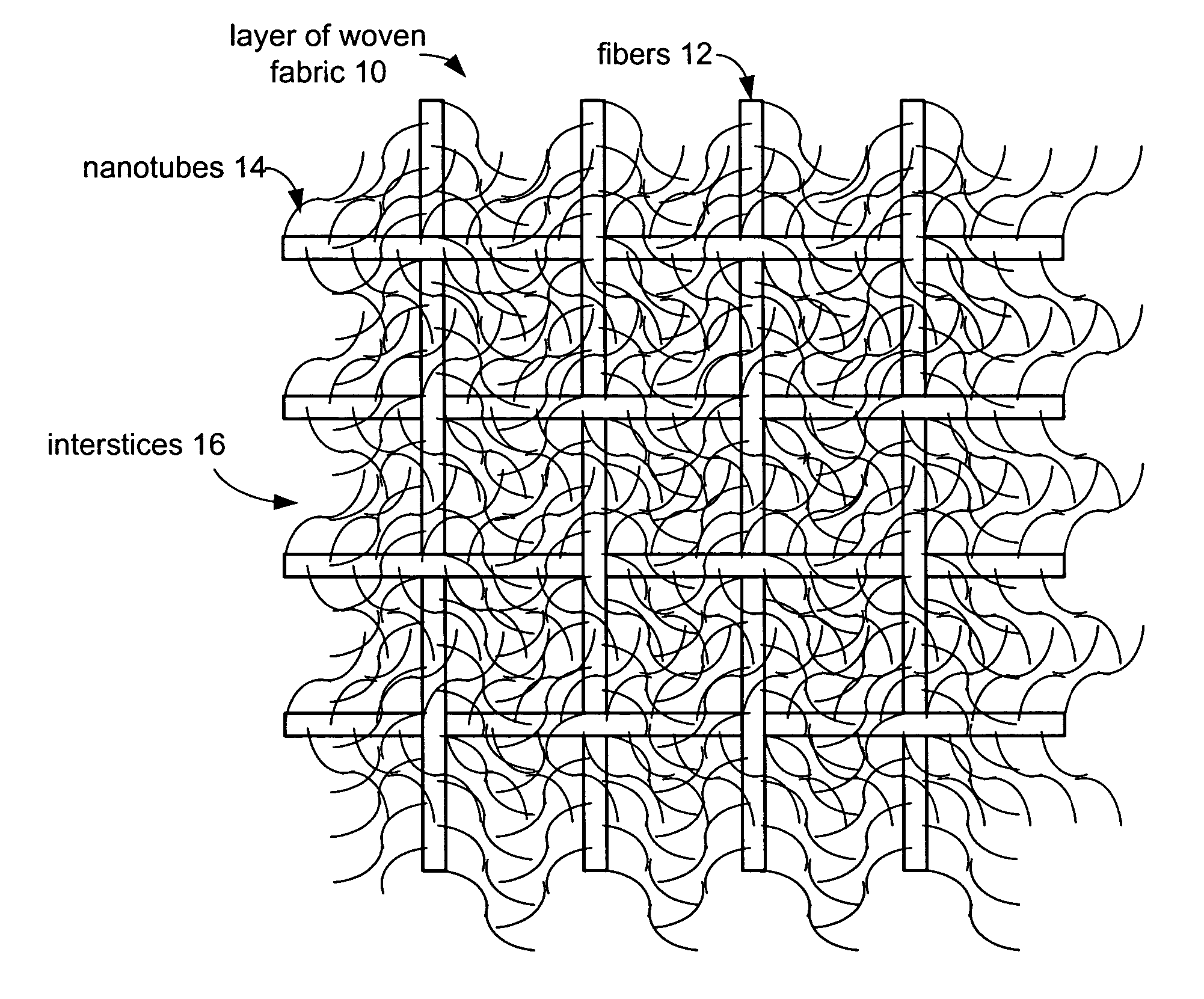Ballistic fabrics with improved antiballistic properties
a technology of ballistic fabrics and antiballistic properties, applied in the field of material structures, can solve the problems of affecting the properties of fabrics, kevlar fabrics would not work optimally if exposed, and inhibiting the range of application of a certain fabri
- Summary
- Abstract
- Description
- Claims
- Application Information
AI Technical Summary
Benefits of technology
Problems solved by technology
Method used
Image
Examples
Embodiment Construction
[0027]Detailed embodiments of the present invention are disclosed herein. However, it is to be understood that the disclosed embodiments are merely exemplary of the invention, which may be embodied in various forms.
[0028]The present invention provides fabrics that exhibit unique mechanical, chemical, electrical, and thermal properties. The fabrics comprise layers of yarns (fibers) woven, knitted or felted together. Nanotubes, such as carbon nanotubes, couple to the fibers to provide these improved properties. The nanotubes may be single-walled carbon nanotubes (SWCNT) or multi-walled carbon nanotubes (MWCNT). The use of carbon nanotubes enhances the fabric's capability to absorb and disperse mechanical energy. Additionally, the carbon nanotubes may insulate, semi-conduct or superconduct electrical charges. The thermal properties of carbon nanotubes allow thermal energy to flow efficiently between the fabric and a heat sink or heat source. The fibers that make these fabrics may be ma...
PUM
| Property | Measurement | Unit |
|---|---|---|
| diameters | aaaaa | aaaaa |
| diameters | aaaaa | aaaaa |
| physical | aaaaa | aaaaa |
Abstract
Description
Claims
Application Information
 Login to View More
Login to View More - R&D
- Intellectual Property
- Life Sciences
- Materials
- Tech Scout
- Unparalleled Data Quality
- Higher Quality Content
- 60% Fewer Hallucinations
Browse by: Latest US Patents, China's latest patents, Technical Efficacy Thesaurus, Application Domain, Technology Topic, Popular Technical Reports.
© 2025 PatSnap. All rights reserved.Legal|Privacy policy|Modern Slavery Act Transparency Statement|Sitemap|About US| Contact US: help@patsnap.com



